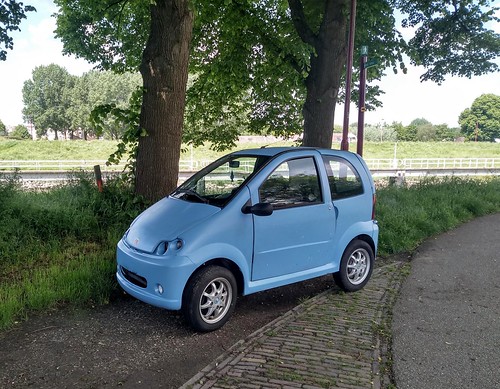
ver’ smol’ cars — Small, cheap, and weird: A history of the microcar Tiny EVs come of age again in the third microcar renaissance.
Alex Goy – May 27, 2024 11:00 am UTC EnlargeAurich Lawson reader comments 0
European car manufacturers are currently tripping over themselves to figure out how personal transport and “last mile” solutions will look in the years to come. The solutions are always electric, and they’re also tiny. What most companies (bar Citroen, Renault, and Fiat) seem to have forgotten is that we’ve had an answer to this problem all along: the microcar.
The microcar is a singular little thingits job is to frugally take one person (or maybe two people) where they need to go while taking up as little space as possible. A few have broken their way into the public consciousnessTop Gear made a global megastar of Peel’s cars, BMW’s Isetta remains a design icon, and the Messerschmitt KR200 is just plain coolbut where did these tiny wonders come from? And do they have a future?
Well, without the microcar’s predecessors, we may not have the modern motorcar as we know it. Sort of.
Let’s roll back to the genesis of the car: the Mercedes-Benz Patent Motorwagen. While not a microcar by any means (though it seats only two people and has a tiny engine and only three wheels), it got plenty of people thinking.
While Karl Benz was inventing the car and his wife was road-tripping it in 1885, a French inventor named Lon Bolle put his thinking cap on. He was 15 at the time, but it gave him time to be with his thoughts. At that age, he had a keen brainone that invented a pedal boat of sorts. Bolle was smart, to say the leasthe built calculators to help his father’s business, one of which won an award at the 1889 Paris Exposition and went on to be patented all over the world. Advertisement Most people agree that the 1885 Mercedes-Benz Patent Motorwagen was the first automobile. Newspress By 1898, Louis Renault had created the Renault Voiturette. Newspress The 1905 Laurent and Klement Voiturette. Skoda
In 1895, Bolle and his father created “La Novelle,” a steam-powered trike, and in the same year, Bolle created a gasoline-powered thing as well. A year later, Bolle founded Lon Bolle Automobiles to mass-produce his tiny cars, dubbing them “Voiturette”a mashup of the French for automobile (voiture) and the suffix you throw on a word to make it small (ette). Small car, basically.
A few years later, Renault (maker of tiny hatchbacks and the gloriously silly Avantime and popularizer of the people carrier in Europe) became a car manufacturer with the release of its descriptively named Voiturette. Louis Renault’s small mechanical wonder was built in 1898, and the first was sold on Christmas Eve of the same year to a friend of Louis’ fatherhe liked the fuel economy from its one-cylinder De Dion-Bouton 273 cc 1.75 hp (1.3 kW) engine and the fact that it could get around town with ease.
That same night, the story goes, Renault sold a further twelve cars. Over its mere five-year production run, the first Renault went from open-top two-seater to a four-seat covered wagon capable of over 35 mph (56 km/h). Bear in mind that less than a century earlier, Stephenson’s Rocket and its almost 30 mph (48 km/h) top speed caused great concern about whether human physiology could withstand such speeds. 35 mph was quite the achievement.
Voiturettes and their less “ette” siblings were very successful, but they were a bit too much for some people. That’s where the cyclecar came in.
First appearing around 1910, cyclecars took small enginessingle cylinders, V-twins, the odd four-potand attached them to simple, lightweight four-wheeled bodies. To be a cyclecar, a vehicle had to have a gearbox and clutch. A huge industry popped up around them, and for good reasonregular cars were expensive to tax and run, whereas a cyclecar wasn’t. Page: 1 2 3 4 Next → reader comments 0 Advertisement Channel Ars Technica ← Previous story Related Stories Today on Ars



